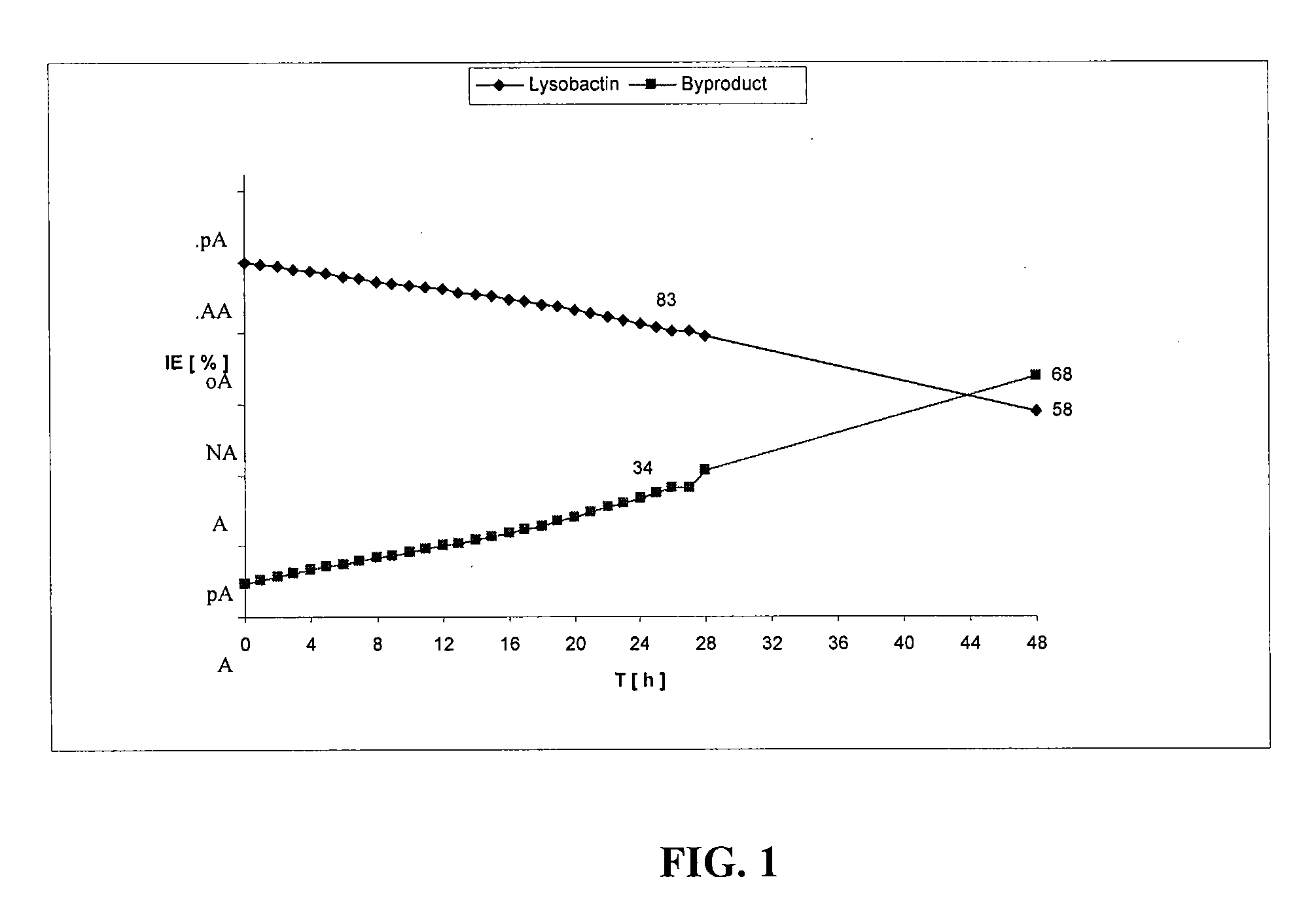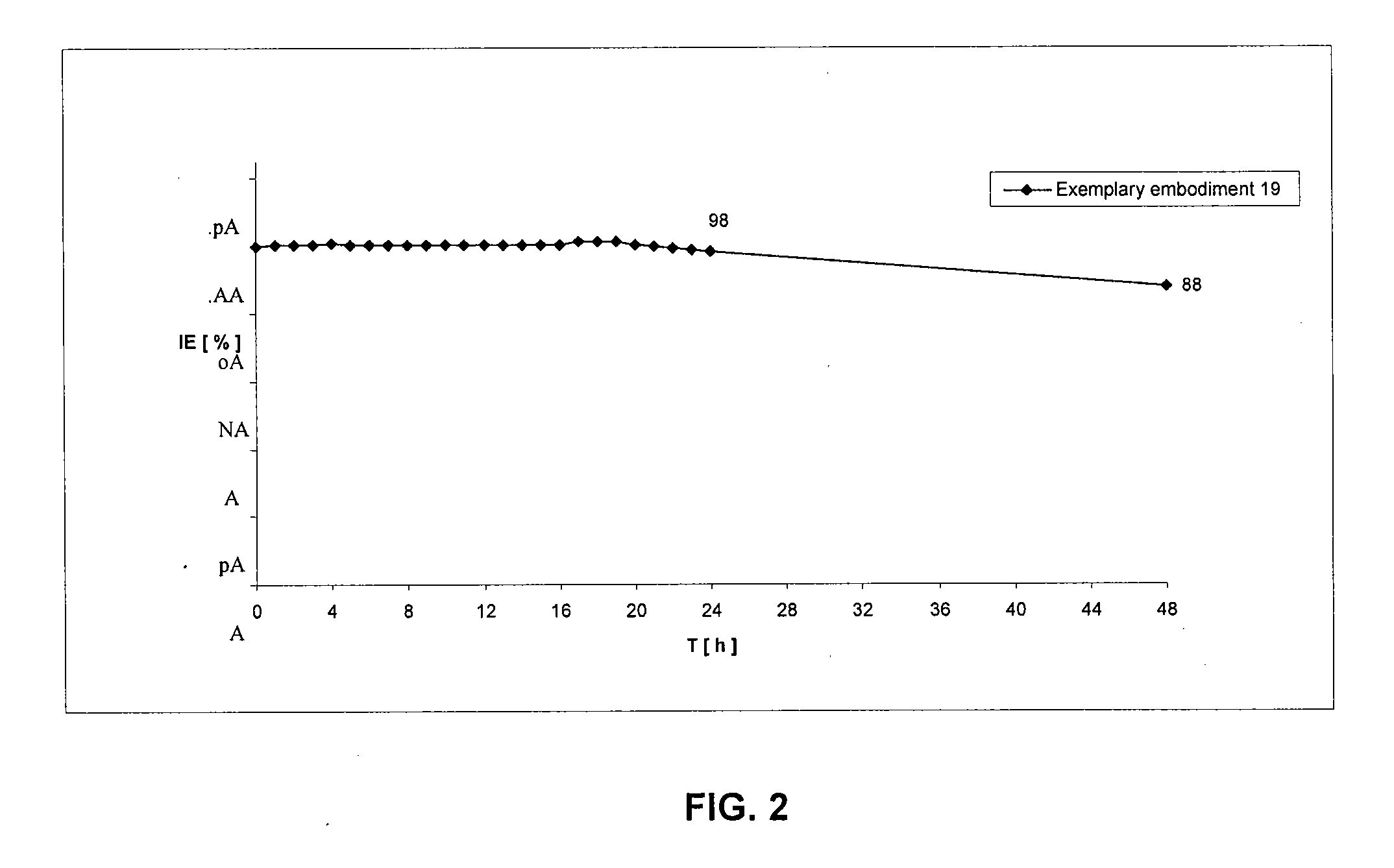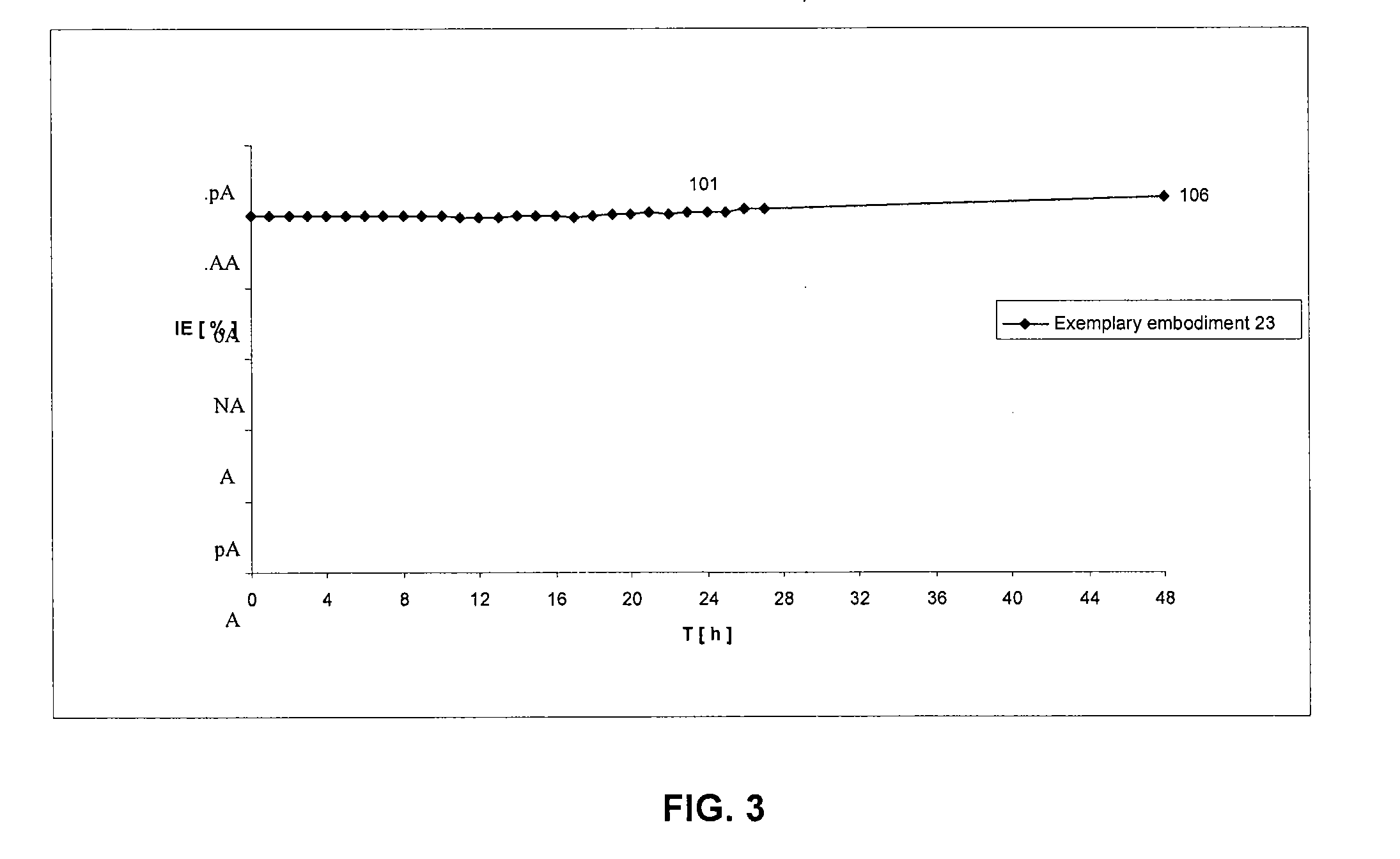Lysobactin amides
a technology of lysobactin and lysobactin, which is applied in the field of lysobactin amides, can solve the problems of insufficient stability of products, and achieve the effects of improving antibacterial effect, reducing nephrotoxicity, and improving tolerability
- Summary
- Abstract
- Description
- Claims
- Application Information
AI Technical Summary
Benefits of technology
Problems solved by technology
Method used
Image
Examples
example 1a
D-Leucyl-L-leucyl-L-phenylalanyl-[(3R)-leucyl]-L-leucyl-D-arginyl-L-isoleucyl-allothreonyl-glycyl-[(3S)-3-hydroxy-asparaginyl]-serine Trifluoroacetate (Dihydrolysobactin) and
example 2a
D-Leucyl-L-leucyl-[3-cyclohexyl-L-alanyl]-[(3R)-leucyl]-L-leucyl-D-arginyl-L-isoleucyl-allothreonyl-glycyl-[(3S)-3-hydroxy-asparaginyl]-serine Trifluoroacetate (Octa-Hydrolysobactin)
[0451]
[0452]The preparation of lysobactin bistrifluoroacetate by fermentation and its isolation is described in WO 2004 / 099239. Lysobactin bistrifluoroacetate (20 g, 13.29 mmol) is dissolved in two portions of isopropanol / water 9:2 (110 ml each). Under an argon protective gas atmosphere, palladium on carbon (10%; 5 g in each case) is added. The reaction mixture is (after degassing) stirred under a hydrogen pressure of 80-70 bar and at 40° C. in a pressurized autoclave for 12 h. Palladium on carbon (10%; 5 g) is again added to the reaction. The reaction mixture is (after degassing) again stirred under a hydrogen pressure of 80-70 bar and at 40° C. in a pressurized autoclave for 12 h. The reaction mixture is (after degassing) once again stirred under a hydrogen pressure of 80-70 bar and at 40° C. in a pres...
example 3a
[(3R)-Leucyl]-L-leucyl-D-arginyl-L-isoleucyl-allothreonyl-glycyl-[(3S)-3-hydroxy-asparaginyl]-serine Trifluoroacetate
[0453]
Preparative Chymotrypsin Cleavage of the Dihydro / Octahydrolysobactin Mixture Substrate Concentration 5 mg / ml
[0454]20 g of dihydro- (about 40%) and octahydrolysobactin (about 60%) are dissolved in 400 ml of methanol and then 3400 ml of cleavage buffer (0.1 M ammonium bicarbonate / 0.5 M urea pH 8) are added. Before adding the enzyme, the solution is warmed to 37° C. in a drying oven. 800 mg of chymotrypsin (100 ml of chymotrypsin solution water / ethylene glycol 1:1, 4 mg / ml; 1:25; prewarmed to 37° C.) are added and the reaction is carried out at 37° C. 200 μl aliquots are taken after 0.5, 1 h, and the enzyme cleavage is stopped with 200 μl of 30% acetonitrile / 0.1% TFA. The samples are analyzed in parallel to the enzyme cleavage by HPLC within 15 min (retention time of fragment 4-11 about 3.6 min, fragment 1-3 (LLF) about 9.6 min, fragment 1-3 (LLA(3-cyclohexyl)) abo...
PUM
 Login to View More
Login to View More Abstract
Description
Claims
Application Information
 Login to View More
Login to View More - R&D
- Intellectual Property
- Life Sciences
- Materials
- Tech Scout
- Unparalleled Data Quality
- Higher Quality Content
- 60% Fewer Hallucinations
Browse by: Latest US Patents, China's latest patents, Technical Efficacy Thesaurus, Application Domain, Technology Topic, Popular Technical Reports.
© 2025 PatSnap. All rights reserved.Legal|Privacy policy|Modern Slavery Act Transparency Statement|Sitemap|About US| Contact US: help@patsnap.com



